Simulation has become an integral part of teaching and learning pedagogy within the Health Faculty at UON. In order to operationalise the faculty’s simulation strategy, a lead for simulation was recruited in September 2022. Roshini Khatri, Head of Health Professions, explains why:
“Simulation is used regularly in Healthcare as a learning and teaching technique to create situations or environments to allow persons/students to experience a demonstration of real-life scenarios for the purpose of practice and learning in a safe and nurturing environment. We have chosen to embed simulation as part of our curriculum to ensure that we are using contemporary and innovative activities to support the healthcare professionals of the future.”
The new Academic Lead for Simulation, Kate Ewing, is passionate about how the use of simulation and virtual reality scenarios can create more immersive, engaging, and more productive learning outcomes. Kate explains that simulation ranges from a technical skill, for example, where students might be learning to catheterise, to a more immersive scenario which is designed to give students the opportunity, in a safe and controlled environment, to experience a clinical situation.
(Click the image or text link below to launch the video in a new tab)
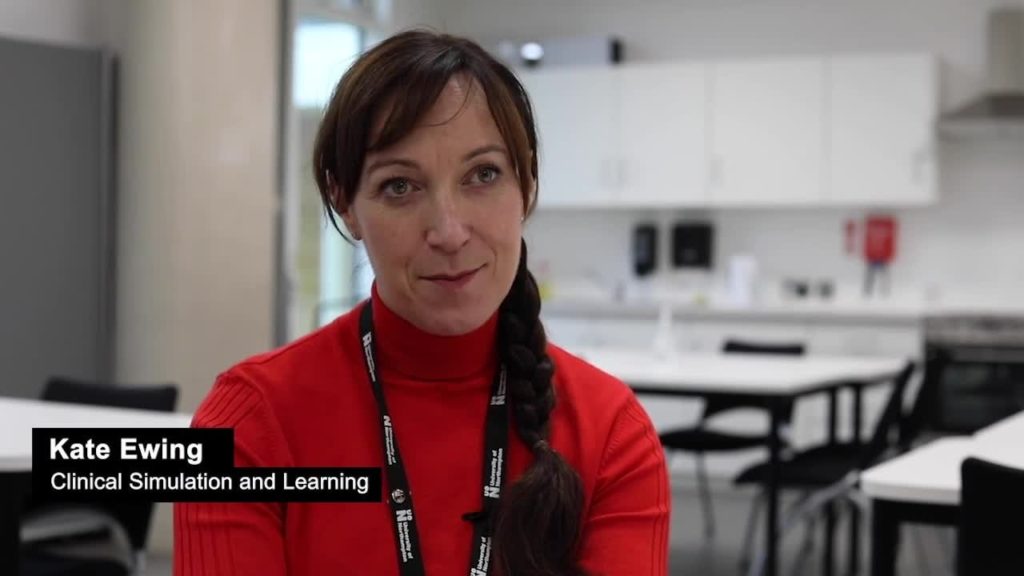
Video: Interview with Kate Ewing and Hannah Cannon
The challenge Kate has, is scenarios need to be written and carefully constructed with learning outcomes at the forefront. Kate admits this can create a ‘heavy workload’ for academic staff, so her aim is to see how these scenarios can be utilised across programmes so they fulfil a range of learning outcomes; allowing students to work inter-professionally with each other, rather than having a single use.
Kate is aware of the limitations of this technology when utilised by small groups or individuals at a time. However, Kate’s strategy provides a “shift in thinking” which encompasses all of the students in the learning process. In her learning situations, the students become observers of the process taking place. Kate comments: “Evidence says, if you debrief the situation and the learning in the right way, observers gain as much as the participants. The simulation is seen as an excuse for a debrief – the debrief is where the rich learning takes place”.
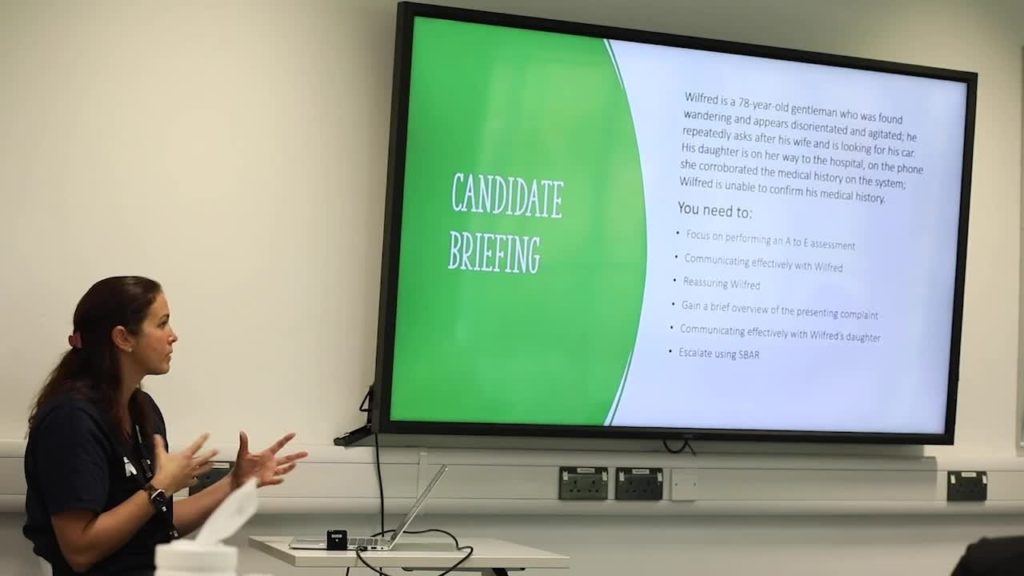
Kate highlights how simulations in a learning environment are very different to clinical settings. “Students aren’t just testing out their skills, as they might do in a clinical environment, rather, they are developing skills of communication and those human factors which require a more intricate debrief strategy”. Although Virtual Reality (VR) scenarios contain published debriefs, Kate feels strongly these need customising so they can be mapped closely to the learning outcomes of individual programmes at UON.
Hannah Cannon, Practice Lead for Nursing Associates, has been working with students on their clinical skills using a VR platform in a whole class situation. Hannah said that in her experience, students seem to feel “really safe” when engaging with scenarios in this way. Her students can play through a scenario safely without the need to worry about the consequences of their decision–making. Hannah believes by having a group of students present, it allows for a more productive and wider discussion about patient care. As a team, the students can work together to make decisions about the patient’s treatment.
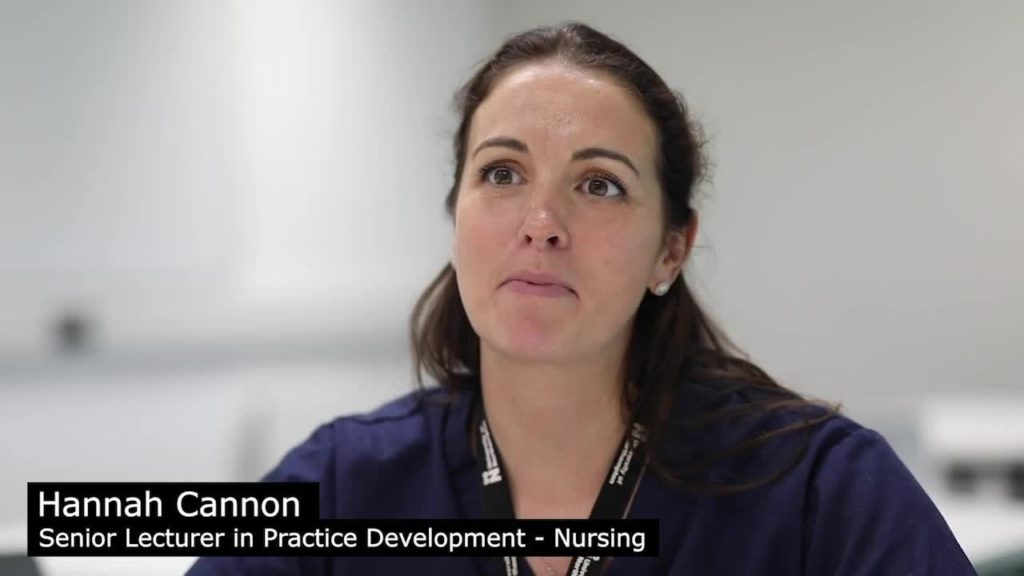
Hannah emphasises how the use of a debrief, which is usually twice as long as the scenario, permits her students to have more effective discussions about the scenario and to reflect on their decision-making. Hannah feels this style of immersive learning allows her students to better grasp their learning outcomes by having the opportunities to see their decision-making play out and then by reflecting on the end result. She goes on to say that it, “heightens student’s self-awareness both professionally and personally,” which she feels is fundamental in nursing care.
Although immersive and engaging, Kate understands simulations are not an “easy answer” to fulfilling learning outcomes at UON, due to their time-consuming nature. But Kate is passionate that, through her role, she will be able to help create a strategy that supports staff to not only fulfill learning outcomes in a more productive way within their own programme, but to enable collaborative scenario-based learning to be adopted across programmes in a more cohesive and versatile way.
Virtual reality (VR) and augmented reality (AR) are quickly gaining traction at the University as effective technologies for teaching and learning.
With VR in particular, it is tempting to imagine a world in which students fit their headsets for a complete University experience. However, as these four films show the reality is more interesting at UON with academics exploring how these technologies can be used in a wide range of creative ways in the classroom.
The first film explores how in 2022-23 Senior Lecturer in Marketing Kardi Somerfield worked with the Police Fire and Commissioners office on a live VR brief to create a virtual reality scenario to promote safer student experiences in Northampton.
(Click the images or text links below to launch the videos in a new tab)
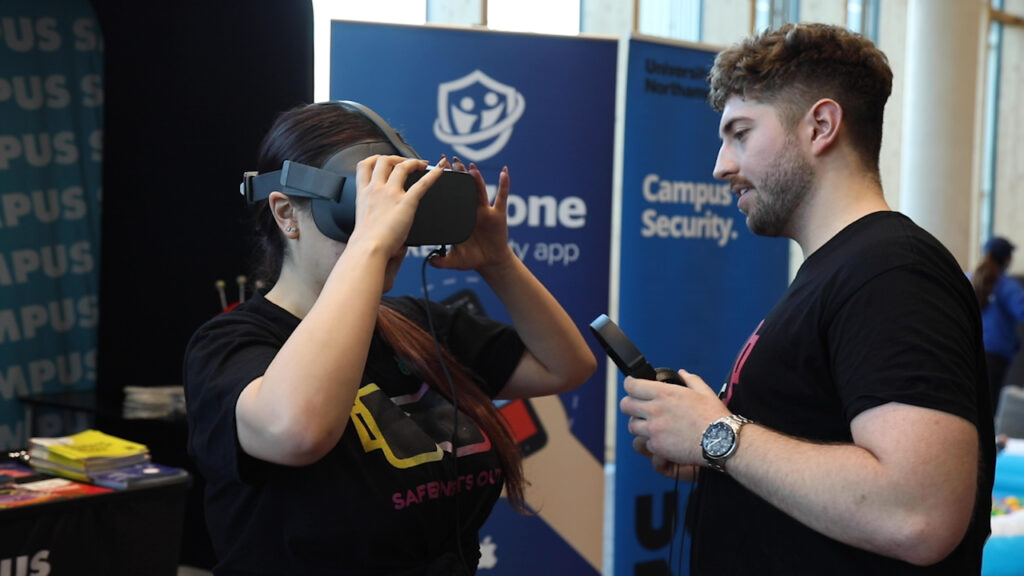
Video: Interview with Kardi Somerfield – Safer Northampton VR Project Duration: 3.55
Using a RiVR Link system the Second-year Digital Marketing students conceptualised, planned, recorded, edited, and released their unique VR experience with accompanying branding including flyers, T-shirts, and signage.
The project was launched to widespread acclaim and media attention, providing the students with highly valuable digital skills. It is an exemplar of how VR technologies can be used creatively as content creation tools in subject areas that are non-technical.
The second film looks at how the subject area of Health is using VR and XR technologies. Sims Lead Kate Ewing and Nursing Senior Lecturer Hannah Cannon discuss how VR software is helping to develop nursing students’ critical skills through the use of interactive hospital scenarios. The simulation tools are used in combination with debriefing discussions that provide rich learning experiences matching the tutor’s individual learning outcomes.
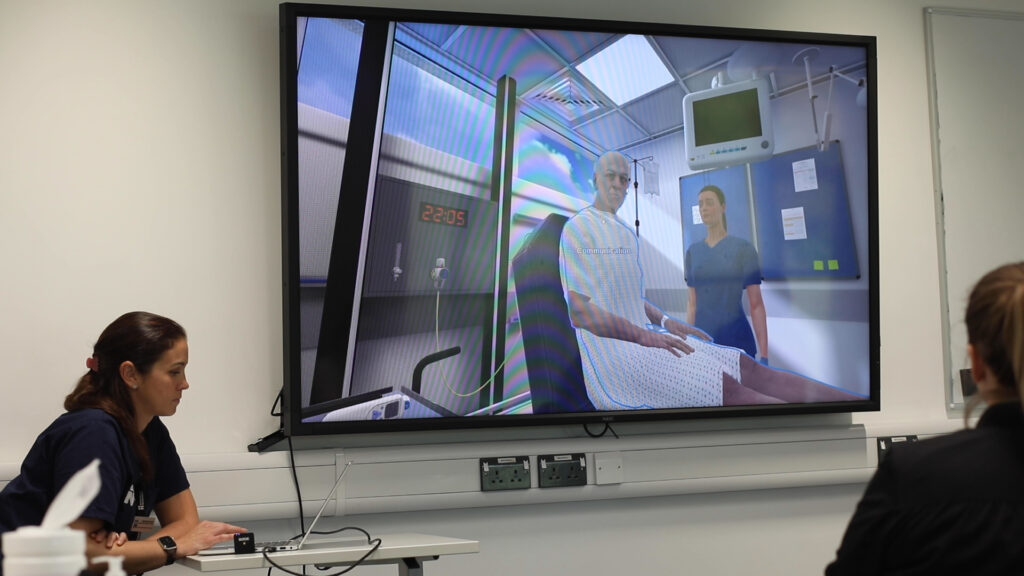
Video: Interview with Kate Ewing and Hannah Cannon on Developing Health Simulations. Duration: 7.41
Our next video case study focuses on how Senior Lecturer in Games Design David Nicholls works with his students to create prototype VR games. He discusses how VR and XR are areas that are both very popular with students and have huge potential for their future employability. So much so, that he is currently collaborating on the development of VR projects across multiple subject areas within the University.
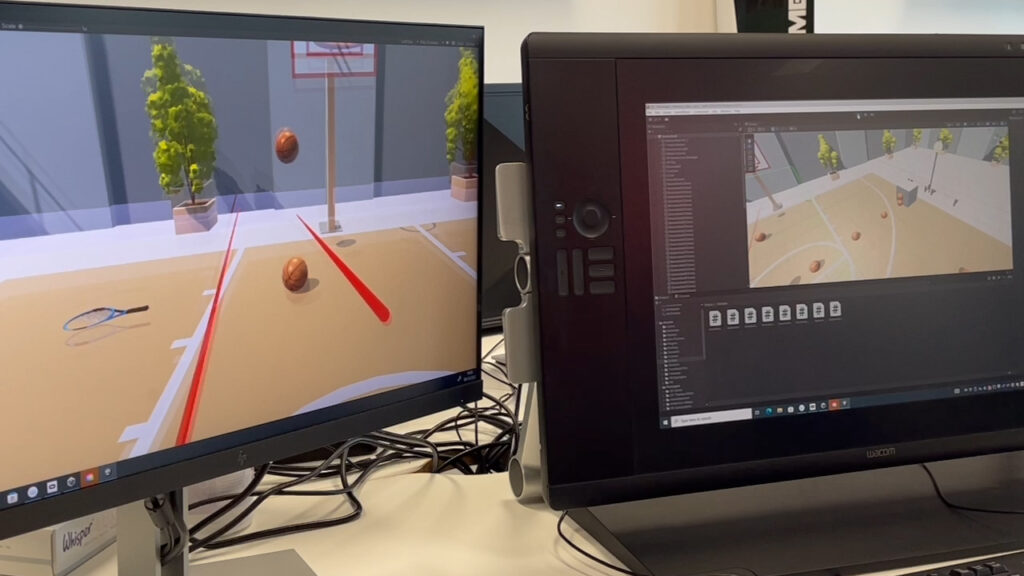
Video: Interview with David Nicholls on use of VR in Games Design. Duration: 2.17
And finally, the last film in this series looks at how the University’s CENTRE FOR ACTIVE DIGITAL EDUCATION (CADE) has launched a number of Special Interests Groups (SIGs) for new technologies such as XR (including MR, VR and AR), Artificial Intelligence (AI), Distance Learning (DL) and Game-Based Learning (GBL).
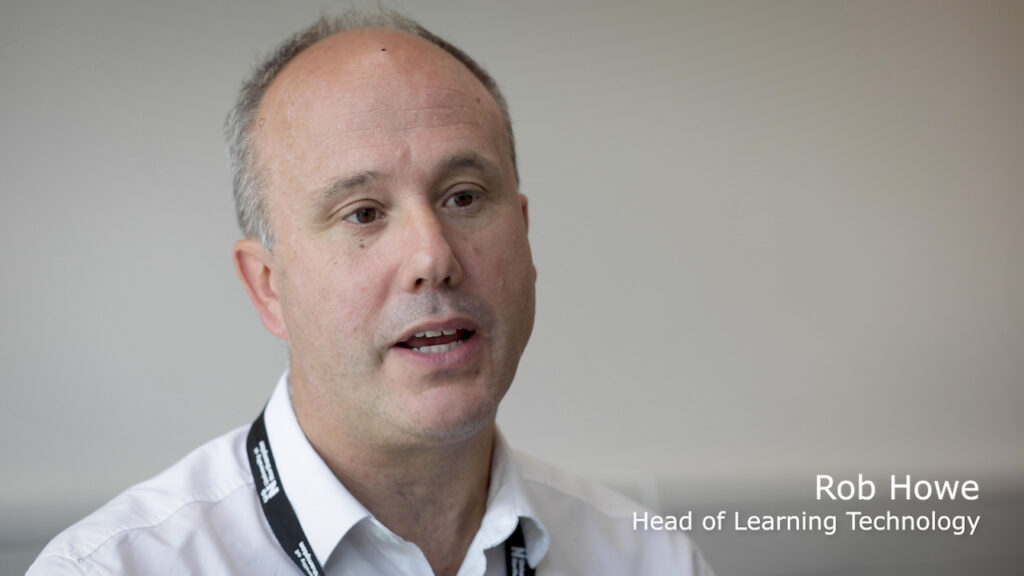
Video: Interview with Rob Howe on CADE and VR special interest groups. Duration 2.42
Head of Learning Technology Rob Howe explains that CADE is a platform for creative discussion on the teaching and learning opportunities afforded by these extended reality technologies, and how by taking a strategic approach to the development of XR and working collaboratively more students and staff will benefit from our expanding expertise in this area.
For more details on the CENTRE FOR ACTIVE DIGITAL EDUCATION (CADE) and to join the discussions please see: https://www.northampton.ac.uk/research/research-institutes-and-centres/centre-for-active-digital-education-cade/
Lecturer in Digital Education at the University of Hull

The recording of the event (49 mins) held on 23rd March, 2022 is available to view.
The slides from the session are available to download
The Padlet from the session is available for contributions.
For more information on the Detect project
In this presentation Dr Gouseti considered why supporting teachers and students with developing critical digital literacies (CDL) appears to be more timely than ever and she presented a new framework of critical digital literacies created by the DETECT Erasmus+ project. This conceptualisation of critical digital literacies builds on other relevant frameworks but it also introduces a more open-ended approach towards capturing different dimensions that can be associated with CDL practices within and outside formal educational contexts. Furthermore, some project outputs relevant for teachers’ professional development in the area of CDL were discussed during this presentation.
Anastasia Gouseti is a Lecturer in Digital Education at the University of Hull. Her research interests include the use of digital media in educational settings and the role of new technologies in promoting teaching, learning and collaboration. She is currently the Principal Investigator for the Erasmus+ DETECT project which focuses on supporting educators with developing critical digital literacies.
Staff profile: https://www.hull.ac.uk/staff-directory/anastasia-gouseti
Selected publications
Gouseti, A. (2021). ‘We’d never had to set up a virtual school before’: Opportunities and challenges for primary and secondary teachers during emergency remote education. Review of Education, 9(3), https://doi.org/10.1002/rev3.3305
Gouseti, A., Abbott, D., Burden, K., & Jeffrey, S. (2020). Adopting the use of a legacy digital artefact in formal educational settings: opportunities and challenges. Technology, Pedagogy and Education, 29(5), 613-629. https://doi.org/10.1080/1475939X.2020.1822435
Gouseti, A. (2017). Exploring doctoral students’ use of digital technologies: what do they use them for and why?. Educational review, 69(5), 638-654 https://doi.org/10.1080/00131911.2017.1291492
Presentation at: Teaching and supporting a digital future: UoN Showcase 4th February 2022
Tom Briggs (Maths Teacher, Museum Education Consultant & MA Education Student) – Unreinventing the Wheel: an Example or Two (or, “Almost Every Museum Has Had Digital Resources for Years So Why Did They Struggle So Much When the Pandemic Hit?”)
The recording of the event is available to view
Presentation at: Teaching and supporting a digital future: UoN Showcase 4th February 2022
Emma Whewell and Helen Caldwell (Associate Professors) share their recent paper on: Changemakers as digital makers: Connecting and co-creating. Written in collaboration with Mark Frydenberg from Bentley University, Boston USA and Professor Diana Andone, University of Timisoara, Romania, published in Education and Information Technologies (January 2022)
This paper presents data from two international projects focused on the interaction between changemaking and digital making in university students. The data is drawn from the contributions of 63 university students located in the United States, Romania, Spain, Belgium, Norway, Denmark and England. Using a design thinking methodology and a thematic analysis of student responses, the aim was to understand how the creative use of immersive technologies, such as augmented and virtual reality, might create an environment for changemaking practices in an international context. Findings suggest that students demonstrated not only enhanced digital skills and student engagement but increased cultural competence and global mindfulness. International digital collaboration can create conditions for students to develop changemaker attributes and identify as changemakers within the spheres of entrepreneurship and education, preparing them to be a force for change in the world.
The article is available here: https://link.springer.com/article/10.1007/s10639-022-10892-1
The recording of the event is available to view
Presentation at: Teaching and supporting a digital future: UoN Showcase 4th February 2022
Alastair Snook is a year 5 teacher in a Warwickshire state school, and graduate of the University of Northampton, Alastair enrolled on UON’s BA Primary Education course in 2018. He was previously employed in the adult educational technology sector, and his third year research and dissertation focused on opportunities and issues associated with primary school usage of ed-tech. During his degree, Alastair also took part in the DLAB2 Erasmus+ project as a student researcher, which sought to enable pupils and teachers to overcome boundaries via educational technologies. He is a UON graduate and presents his undergraduate dissertation findings.
The recording of the event is available to view
Alison Power, Associate Professor (Learning and Teaching), Senior Lecturer in Midwifery, FHES
Demystifying the Digital World: supporting midwifery students to develop digital competence and confidence
Presentation at: Teaching and supporting a digital future: UoN Showcase 4th February 2022
To meet Professional Standards for pre-registration midwifery education, ‘technology-enhanced [and simulated] learning opportunities’ (NMC, 2019a:10) are embedded in the curriculum in a first-year module which aims to develop students’ digital and technological literacy.
At the start of the module students undertake self-assessments of digital competency using three online platforms (UoN’s Virtual Learning Environment (VLE), the NHS IT Skills Pathway ‘Digital Learning Solutions’ (DLS) and the JISC ‘Building Digital Capability’ website) to identify their digital learning needs. All three platforms then offer a suite of e-learning packages for students to complete, targeting their areas for development. The module is largely delivered online and uses a range of innovative and dynamic learning and teaching approaches for students to engage with both synchronously and asynchronously.
The first cohort to complete the module were asked about their experiences via an online survey and all respondents agreed that the module had been successful in its aim of developing their digital confidence and competence.
The recording of the event is available to view
Helen Caldwell kindly collated a list of the tools used across the Education courses with their students. This shows a wide range and diversity which are useful for students who will be working in a Schools environment in the future. The team have shown a real enthusiasm to enhance student engagement and enhance the interactivity within sessions. The range of activities reflect a growing confidence and expertise with Active Distance Learning and Active Blended Learning.
Helen notes that “…the collection of tools and strategies is a testament to the drive within the education team to make their online sessions active and engaging, and to find imaginative ways to facilitate sensemaking through digital making. “
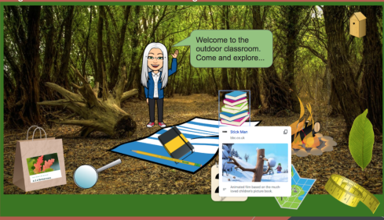
The Education Teams who are using the tools provide localised support with their students. The range of tools covered within the Education courses included:
- Blackboard Collaborate
- Book Creator
- Jamboard
- Padlet
- Adobe Spark
- Powtoon
- Wakelet
- Tweetbeam
- Bitmoji
- Thinglink
- Kahoot
- Mentimeter
- AnswerGarden
- OneNote
- Miro
- Canva
The use of these tools within the Education Teams are driven by pedagogical requirements and they are carefully piloted within the team in conjunction with their Learning Technologist in the first instance to ensure they are fit for purpose and do not duplicate any existing licensed product. The tools support the teams flexible approach to ensure their students are prepared for school environments and enhances their employability. Staff in other teams should review the recommendations for the use of third party tools and speak to their Learning Technologist in the first instance prior to introducing any new systems.

During 2020 Mark decided to make a radical change in his teaching through removal of PowerPoint in his synchronous teaching. He still use some pre-recorded presentations, but his ‘live’ teaching, both face-to-face and online, have now used NILE(Blackboard Learn), not PowerPoint.
In this guest Learntech posting, Mark shares some of his hints and tips on ‘life without PowerPoint’.
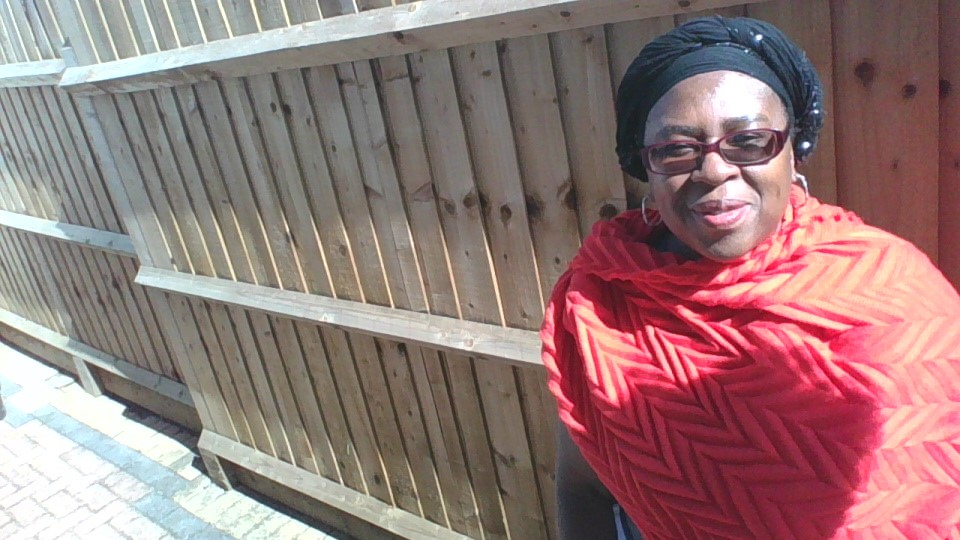
“The situation was that the room was not big enough to accommodate all the students, so they chose to sit nearby, whilst there were others who could not come to the face to face session and were online.
I am a bit of a wanderer when I am teaching and so I do not know if the students could always hear me when I move around. There is also the issue of not being able to hear the student’s contribution because of the masks and so I needed to ask on a couple of occasions for them to repeat themselves.
…there is a need to multi-task in terms of ensuring there is participation and accessibility of resources and activities for this delivery method.
On reflection, I will ensure that I have a hard copy of the presentation, in case IT issues occur and to keep checking in with the students who are online or sitting nearby more often. The 2 hours flew by.”
The University is continuing to refine hyflex models and share experiences on when this works well, how it can be refined and when other methods of delivery may be more appropriate.
For more information on socially distanced delivery then please see the Learntech blog
If you have other experiences to share then please email rob.howe@northampton.ac.uk
Recent Posts
- H5P (HTML5 package) content types meets the needs of Jim Atkinson, Staff Development Trainer
- Blackboard Upgrade – July 2025
- StudySmart 2 – Student Posters
- NILE Ultra Course Award Winners 2025
- Blackboard Upgrade – June 2025
- Learning Technology / NILE Community Group
- Blackboard Upgrade – May 2025
- Blackboard Upgrade – April 2025
- NILE Ultra Course Awards 2025 – Nominations are open!
- Blackboard Upgrade – March 2025
Tags
ABL Practitioner Stories Academic Skills Accessibility Active Blended Learning (ABL) ADE AI Artificial Intelligence Assessment Design Assessment Tools Blackboard Blackboard Learn Blackboard Upgrade Blended Learning Blogs CAIeRO Collaborate Collaboration Distance Learning Feedback FHES Flipped Learning iNorthampton iPad Kaltura Learner Experience MALT Mobile Newsletter NILE NILE Ultra Outside the box Panopto Presentations Quality Reflection SHED Submitting and Grading Electronically (SaGE) Turnitin Ultra Ultra Upgrade Update Updates Video Waterside XerteArchives
Site Admin

